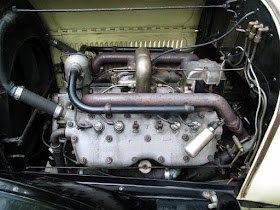Below was taken from an AACA discussion post. Yes, these cups inject raw gas into a cylinder. The cup opening is the process that primes the engine. But I heard let night another function of doing this. Especially in the winter, when engine oil is very thick, it was very difficult to turn over an engine. The priming process was really to use the gasoline to wash down the cylinder walls of oil, thus making it easier to turn over the engine!
This blog will expand on themes and topics first mentioned in my book, "The Automobile and American Life." I hope to comment on recent developments in the automobile industry, reviews of my readings on the history of the automobile, drafts of my new work, contributions from friends, descriptions of the museums and car shows I attend and anything else relevant. Copyright 2009-2020, by the author.
Thursday, May 24, 2018
Primer Cups on Old Automobile Engines: Their Use
Below was taken from an AACA discussion post. Yes, these cups inject raw gas into a cylinder. The cup opening is the process that primes the engine. But I heard let night another function of doing this. Especially in the winter, when engine oil is very thick, it was very difficult to turn over an engine. The priming process was really to use the gasoline to wash down the cylinder walls of oil, thus making it easier to turn over the engine!

Thanks for sharing that Cecil. I would have thought the priming cup(s) would have needed to be closed before starting
ReplyDeleteAn added benefit to the priming cup was that it could serve as a compression release. This would ease crank starting large engines.
Hire a car in Dubai is now on few clicks!!!
I don't believe enough priming fuel was used to "Wash" the oil off the cylinder walls. That wouldn't make it easier crank anyway, because hard cranking caused by thick oil comes from the resistance in the oil pump trying to pickup and pump that oil through the engine.
ReplyDeleteOn the splash system the pump only pumped oil to the dashboard sight gauge, it didnt pump oil through the engine.
ReplyDelete